| |
|
|
| |
Flood Update
Sun 3rd August, 2014
|
|
|
|
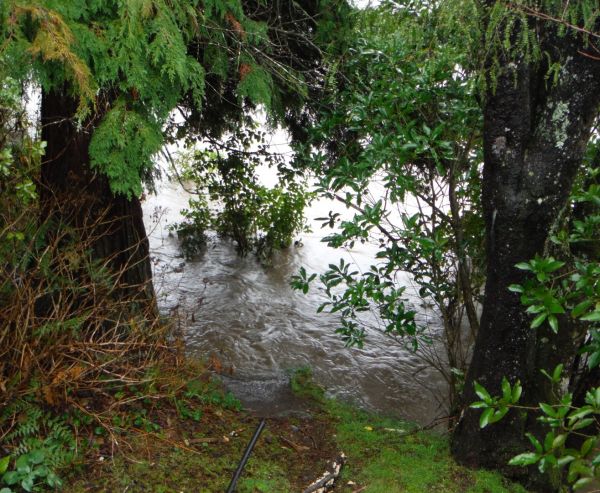 Heavy rain and gales moved rapidly over the North Island late on Saturday and by Sunday morning the river was high and dirty and flowing at around 350 cumecs. With more rain forecast it will probably be Tuesday before things begin to settle down again but when ever it does the fishing should be first rate. Heavy rain and gales moved rapidly over the North Island late on Saturday and by Sunday morning the river was high and dirty and flowing at around 350 cumecs. With more rain forecast it will probably be Tuesday before things begin to settle down again but when ever it does the fishing should be first rate.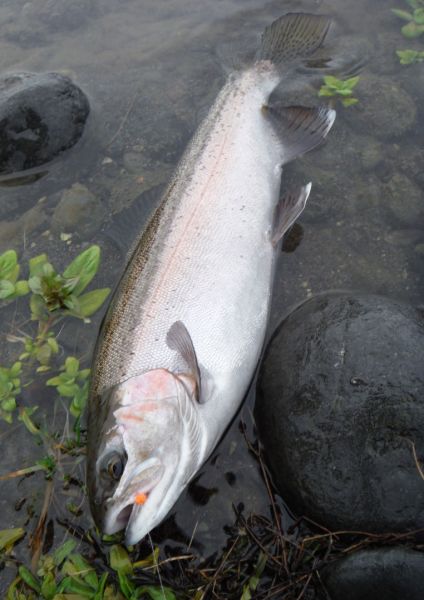
Until levels began to rise on Saturday afternoon the Tongariro had been pretty busy and was chucking out some good rainbows and the occasional brown. Talking of brown trout there were a couple of clubs in town holding their annual competitions and I spotted several anglers carrying fish. The town pools and lower river seemed popular and by the time I ventured down that way most of " the spots " were already taken.
As the river began to color up I switched to globugs and was"in" straight away ... the first for me on a bug this winter. I went on to hook five from this particular lie. It's a place that rarely fishes well in summer ... but during the winter runs its a banker.
Notice I said hooked ... not landed. These fresh run fish are incredibly strong and stubborn, especially if you're playing them in fast water and despite applying plenty of side-strain I only got two on the bank.
Using side-strain is the quickest way to tire a fish out and in this spot is the only way you'd ever stop them disappearing back down the nearby "chute".
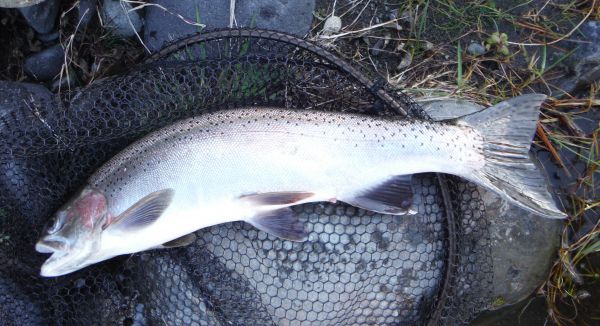
Steel-head rainbows are well known for those notoriously powerful first runs and most fish that escape are lost within a few seconds of hooking up. Its important that your drag is adjusted correctly. You want it set light enough to allow the fish to take line before it snaps your tippet but not so light that the spool over runs on that early dash for freedom. In this stretch as soon as I hook up I get the rod over low and parallel to the water and if I think it needs too I let the fish take line under constant controlled pressure using a combination of drag and palm control. I prefer to then play the fish on the line rather than the reel. I think doing it this way you get a better " feel " for whats happening below the surface allowing you to fine tune the amount of stick you give the fish. In these situations its vital not to lock down on the fish because you WILL part company. Once I have some idea of what I'm dealing with I gradually make my way back to the bank keeping the rod low, regaining line when I can. Some recommend switching the position of the rod from side to side to keep the fish guessing and off balance but don't overdo this. In this stretch you have to wade out to the opposite bank to reach the run. So by the time you get back to the TRB the fish is normally pretty much played out and you can raise the rod and steer it into the shallows and up onto dry land. But in other parts of the river if a good fish gets into fast water you'll often have to chase it downstream to successfully land it, not easy when you're trying to pick your way over slimy Tongariro canon-balls. In fact I met a couple of anglers who'd taken an unexpected dip this weekend, one while playing a fish and the other just wading ... so this might be a good time to repeat this bit of blurb from 2012.
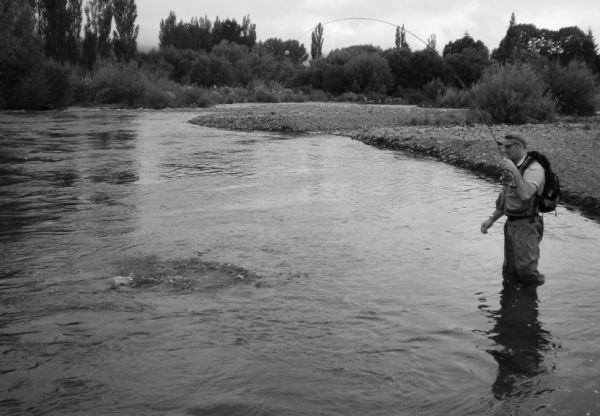
WADING TIPS FOR US OLDER ANGLERS
The Tongariro has plenty of excellent access and although you don't have to stand up to your armpits in the middle of the river to catch fish there are occasions when we have to wade.
The "young guns" on the river often extract the urine out of us old fellas especially where wading is concerned. But that clock starts ticking as soon as we take our first breath and its a fact none of us get younger. Sooner or later those situations that we didn't think twice about a few years ago suddenly become a little more tricky. Below are some things we can do to stay safe and dry.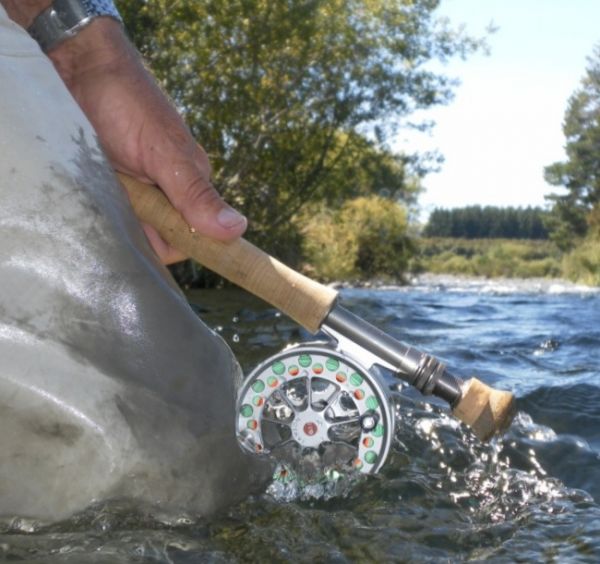
WEAR A BELT
A wading belt is one of the simplest things you can use to help keep you safe while negotiating your way around a river. It traps air inside your waders and contrary to the popular urban myth, if you fall in, you won't up end and drown. When was the last time you saw a pair of upside down wading boots float past with a hapless angler hanging underneath? More importantly it helps keep the river out if you take an unexpected dip. Try standing up, even in the shallows, with your waders full of water.
AVOID UNNECESSARY WADING
Fish your feet first and then enter the water if you have too. There's less chance of spooking fish if you stay out of the river, especially in deep, clear, slow moving pools.
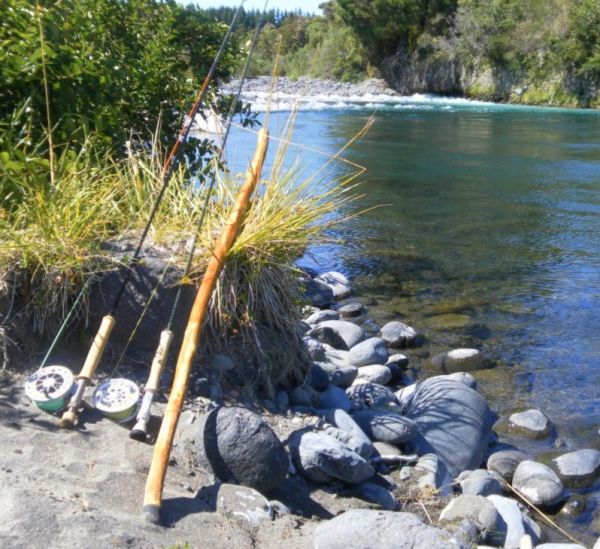
USE A WADING STICK
Nowadays I always carry a good stout wading stick. Even if you're not wading and just walking, the Tongariro has areas along the rivers edge covered with large rocks and boulders. The extra stability a stick provides far outweighs the inconvenience of having to carry it.
Some of mine are quite intricately decorated and I'm always asked where I get them. I have to make a confession here ... they're not carved by an old Maori craftsman ... he's actually a mate of a mate originally from Liverpool !
WEAR POLAROIDS
Eliminating glare ensuring you can see any obstacles below the surface will help you wade safely. Avoid crossing where you can't see the bottom.
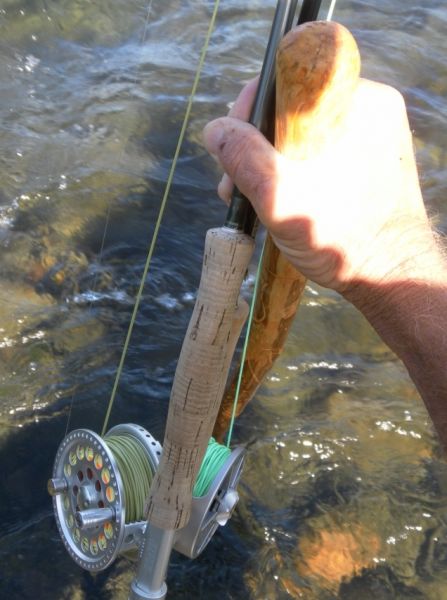
PLAN YOUR ROUTE
Study whats in front of you before you start and workout the safest way across. Check downstream for hazards or particularly fast or turbulent water. If you can't see a safe way out {should you get swept downriver} then it might be wiser to cross elsewhere.
WORK WITH THE RIVER NOT AGAINST IT
Where ever possible cross diagonally at a downstream angle.
BODY POSITION
Cross with most of your body side on to the current and your stick upstream. By leaning into the current using the stick for support you'll expose less of your body to the flow, making it easier to keep your balance as you make your way across.
THE POINT OF NO RETURN
We're all different but in deeper water there eventually comes a time when we become buoyant. To avoid a dunking learn to recognize your point of no return ... before its too late.
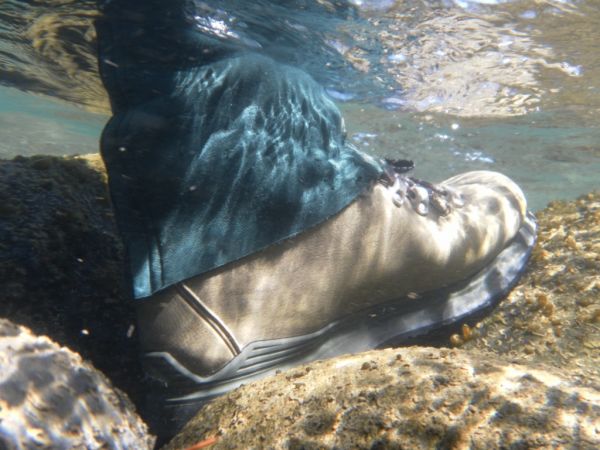
FEEL WITH YOUR FEET
The river bed of the Tongariro is often uneven and covered with smooth slippery rocks of all shapes and sizes.
Use your stick to check for changes in depth and with a wide stance feel your way across with your feet. Some of the rocks will roll underfoot so always make sure you have one foot firmly planted before you transfer weight to take the next step.
WALK BACKWARDS
If you have to retreat its usually safer to edge backwards. Take your time until you get out of the main flow and into shallower water before you attempt to turn around.
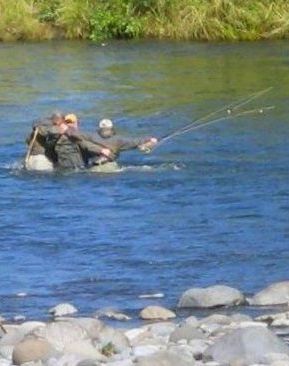
BUDDY UP
Where possible cross with another angler or anglers. By linking arms or holding on to one anothers wading belts its much safer and easier for two or three to cross together than a single person. Position the biggest or more confident angler upstream to break the flow for the others.
IF YOU DO FALL IN
Try not to panic. Roll onto your back with your toes out of the water and your feet pointing downstream.
Concentrate on saving yourself not your tackle.
If you have too, let the rods go and use both arms to help maintain this position as you're carried downstream. Try and keep your feet pointing at any obstacles to protect your head and use your arms like oars to steer around them. Look for slower or shallower water ahead and if its safe to do so point your feet at an angle towards the bank and using your arms " row " ashore and get out of those wet clothes.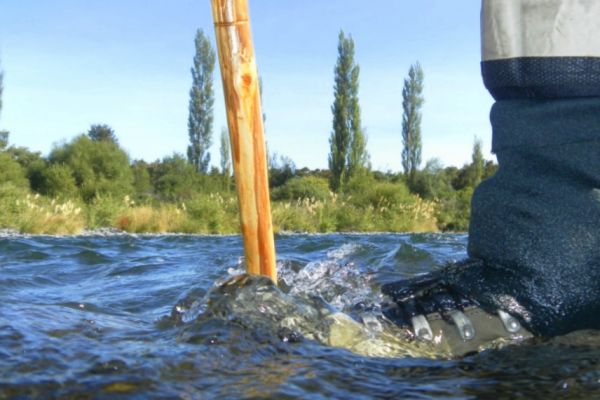
The cloud has now cleared and the sun is shining but there is more heavy rain forecast in places overnight and tomorrow ... although you wouldn't think so at the moment. There's also a return to cooler weather tonight as the winds turn more southerly. The Genesis River Flow graph hasn't been updating for the last 24 hrs or so but the Tongariro is definitely not flowing at 24.8 cumecs. I've just rung the info line 073 868113 and levels have currently dropped back from its peak at about 430 cumecs to 180 cumecs. Not a big flood by Tongariro standards but it will have cleaned things up a bit and scoured some of that brown algae off the rocks. Its unusual to see so much of this stuff still around at this time of year but although anglers find it a pain the aquatic insects in the river love it. There will probably be a few little changes out there as well, which will make things interesting once the river becomes fishable again.
See you out there guys.
Tight lines
Mike
UPDATE ON THE UPDATE
Monday 4th August 1.15 pm
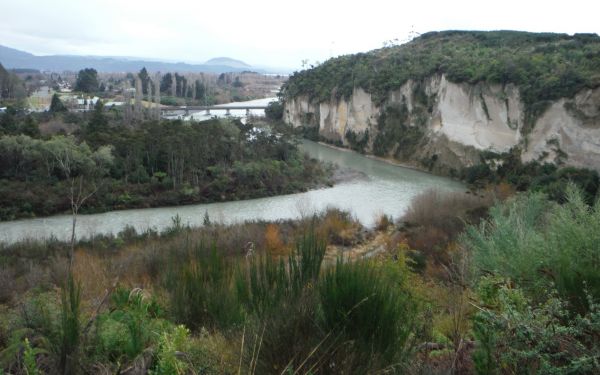
The Tongariro is now flowing at about 84 cumecs and levels are continuing to fall back. There are more showers forecast today and ominously it has clouded over again during the last hour. As you can see the river is that grey/green color that's typical of the Tongariro as it clears after a fresh. Depending on rainfall it should be fishable later today but I'll probably wait until tomorrow.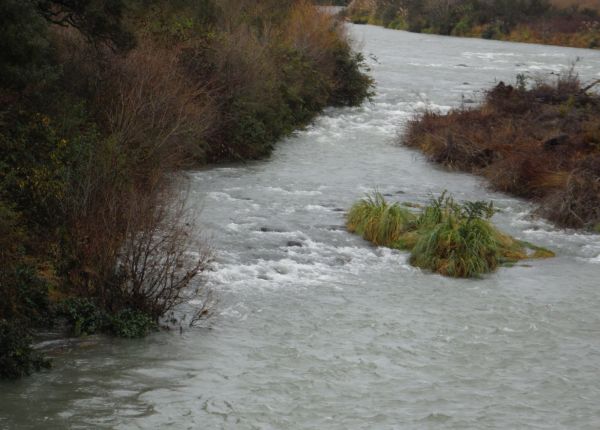
Meanwhile some images below taken over at the Braids late this afternoon. Water flowing again ... at least temporarily through some of the old hot-spots.
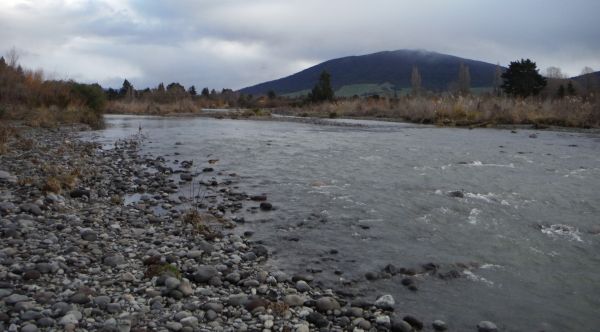 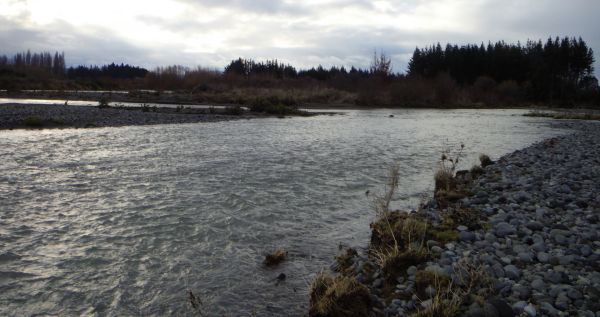 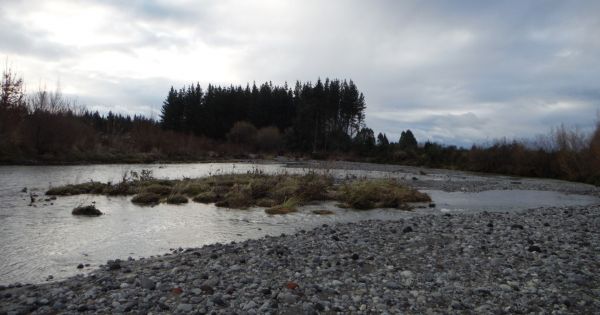 |
|
|
| Back to Top |
|
|
|
|
|
|
|